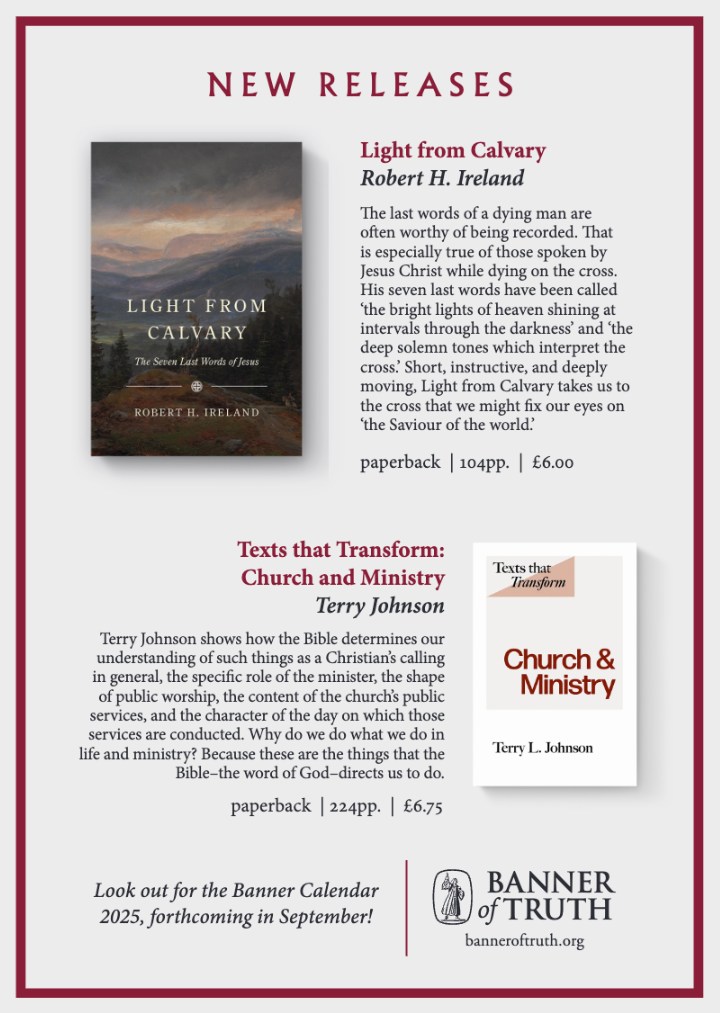A cold blast of pragmatic thinking blew through the churches of the West at the end of the seventeenth century. Tiring of the religious conflicts of the Reformation and Second Reformation eras, many Christians sought to downplay the distinctive doctrines and practices which they believed had been so divisive – even bloody.
As in society generally, ‘enlightened’ thinking became entrenched within the Bride of Christ. Decorum, reason and reasonability, stability – even quietness – held sway.
The orthodox reacted to this tendency in two ways. Some stressed the need for a return to orthodox doctrine, as summarised in the Patristic and Reformation creeds.
Others sought a more dynamic piety, both individually and collectively. Instead of fighting their common foe, these two parties vied for leadership in the battle against spiritual decline.
New World
Perhaps nowhere was the dispute more bitter, more unnecessarily destructive, than in the emerging United States of America. And perhaps no other church leader embodied the second tendency in that dispute more than Gilbert Tennent.
He was born 300 years ago in County Armagh in Northern Ireland on 5 February 1703, the honeymoon child of his parents, William Tennent (1673-1746) and Katherine Kennedy. Katherine was a daughter of Gilbert Kennedy, one of many distinguished pastors ejected from their pulpits in 1662.
Gilbert’s father abandoned his Scottish Presbyterian roots and took orders within the (Episcopalian) Church of Ireland, before settling down in the New World as a Presbyterian pastor in 1718.
Two pastorates in New York State preceded the world-famous ministry he established in Neshaminy, Bucks County, north of Philadelphia.
Until this time, almost all Presbyterian pastors in America, like Pastor Tennent himself, were from Europe, educated there for the ministry before emigrating to America.
Now, more and more Americans were being called to the ministry. But the cost and danger (both physical and theological) of sending them back to Europe for training were great.
Log College
William Tennent, therefore, established a small school for Presbyterian ministers in a log cabin on the farm he owned in Bucks County. Over the next few decades, a small number of ministers were educated in this celebrated ‘Log College’, including his sons Gilbert, William Jr (1705-1777, pastor at Freehold, New Jersey, 1733-1777), John (1706-1732, also pastor at Freehold, New Jersey, 1730-1732), and Charles (b. 1711, pastor at Whiteclay Creek, Delaware, and later, Buckingham, Maryland).
Gilbert Tennent seems to have been taught and embraced a traditional Calvinistic creed, but that was not what mattered most to him. He ‘was annoyed by church members who equated belief in the Bible and orthodoxy with saving faith’.1
Tennent earned his MA from Yale College in 1725 and was licensed to preach in the same year. He accepted a call in 1726 to establish a new Presbyterian church near New Brunswick, in central New Jersey.
Pietism
The only other pastor serving in the area was Theodore Jacobus Frelinghuysen (1692-1748) of the Dutch Reformed Church, a German who had been greatly influenced by European pietism before emigrating.
This pietism had two major strains. One stressed the personal conversion experience, and followed a set formula leading to a crisis experience. The other hounded pastors who were considered unconverted, especially as they impeded true conversions to Christ.
As young pastors inevitably do, Gilbert Tennent used the early years of his first pastorate to flesh out the theology and practice that would guide his ministry, based on the education he had received earlier.
Borrowing liberally from Frelinghuysen, Tennent preached more and more passionately about sin and grace, so that his hearers would be convicted of the greatness of their sin but also of the sufficiency of Christ to deal with it.
He also developed a strong and public disdain for many colonial preachers, considering them wolves in sheep’s clothing. At this point in his ministry, Tennent’s message may accurately be described as negative and dark.
Popular preacher
His personality was, however, more winsome than his preaching would suggest. As fellow Log College alumnus, Samuel Finley (1715-1766), wrote: ‘In his manners, at first view, he seemed distant and reserved; yet, upon nearer acquaintance, he was ever found affable, condescending, and communicative. And what greatly endeared his conversation was an openness and undisguised honesty, at the greatest remove from artifice and dissimulation, which were the abhorrence of his soul’.2
The young pastor quickly became a popular preacher. Travelling primitive roads, Tennent preached in many churches. Increasingly, local pastors did not make him welcome, but, despite opposition, his ministry led to a large number of striking conversions to Christ. This confounded his critics and delighted his followers.
Great Awakening
Frelinghuysen and others, like the New England Congregationalist Jonathan Edwards (1703-1758), were experiencing similar results from similar preaching. In both the Middle Colonies (New York, New Jersey and Pennsylvania) and in New England, a spiritual stirring became manifest as the 1730s went on.
This movement would eventually be called the ‘Great Awakening’. It became more unified when George Whitefield (1714-1770) arrived from England in 1739 and personally visited the leaders of the Awakening in their various localities, bringing some coordination to the revival work.
The first time Whitefield heard Gilbert Tennent preach, he recorded in his Journal:’Never before heard such a searching sermon. He convinced me more and more that we can preach the gospel of Christ no further than we have experienced the power of it in our own hearts. Being deeply convicted of sin, by God’s Holy Spirit at his first conversion, he has learned experimentally to dissect the heart of a natural man. Hypocrites must either soon be converted or enraged at his preaching’.3
Controversy
After the death of Gilbert Tennent’s wife (about whom we know almost nothing), Whitefield took the grieving widower on a preaching tour all the way to Boston, Massachusetts, with striking results among Tennent’s hearers.
But the willingness of the ‘Awakening’ preachers to penetrate into what were almost considered parishes (on the European ecclesiastical model), and the unsparing critiques of preachers by the revivalists, caused huge controversy.
Many Presbyterian pastors considered the Awakening subjective, irregular and dangerous (some termed it satanic!), although the Tennents opposed physical manifestations such as fainting and groaning.
Using the church courts, opponents sought to stifle the Tennents – particularly Gilbert as the apparent leader of the movement. Efforts were made to tighten the church’s subscription to the Westminster standards.
But this had little effect on the Tennents, who proved to be largely orthodox in their personal beliefs.
Notorious sermon
Potentially more damaging were efforts to curtail certain practices of the preachers of the Awakening – such as forbidding preaching near a Presbyterian church without the approval of the pastor.
The Presbyterian Synod (the General Assembly was only organized in 1788) assumed greater control over the ordination of ministers. Tennent responded in a notorious sermon at Nottingham, Pennsylvania, which was published as The Danger of an Unconverted Ministry.
Dr Archibald Alexander of Princeton Seminary later called this address ‘one of the most severely abusive sermons which were ever penned’.4The result was a split in the Presbyterian Church in 1741, with Tennent in the ‘New Side’ Church and his opponents in the ‘Old Side’ Church.
The unpleasantness of this schism seems to have had a salutary effect on Tennent, who was more responsible for it than anyone else. So did the excesses of some of the revivalists, such as the mentally-unbalanced Presbyterian minister James Davenport (1716-1757).
The middle-aged Tennent began to soften the hard edges of his message and methods. He argued, somewhat ingenuously, that the changes ‘were not corrections of his own course but rather clarifications of his longstanding policy’.5
Reunification
But whatever the nature of the changes, Tennent’s effectiveness as a revivalist began to decline.
He left New Brunswick to pastor the New Side Second Presbyterian Congregation in Philadelphia, where he had more contact with other tendencies within the Presbyterian camp.
In 1753-1754, Tennent accompanied Rev. Samuel Davies (1723-1761), the leader of the Presbyterians in Virginia, to Great Britain, where they raised the significant sum of £357 for the New Side Presbyterian University being established in Princeton, New Jersey.
By 1749, Tennent had become a champion of Presbyterian reunification, which occurred in 1758. By this time, the New Side had grown much larger than the Old Side and were largely able to dictate the terms of the reunification.
But the Great Awakening was now a memory. It had greatly strengthened the spiritual tone of the American colonies, but had weakened the hold of the organised church, tempered the Calvinism of the Presbyterians and others, and created a mindset of rebellion against established authority. This would later have worldwide repercussions.
Groundwork for controversy
Gilbert Tennent was undoubtedly the single most important Presbyterian minister in North America before the War for Independence (1776-1783), although he had notable ‘competition’ like Samuel Davies and Jonathan Dickinson (1688-1747) of northern New Jersey.
Tennent published only three volumes of sermons, which appeared in 1744, 1745, and 1758, and numerous single addresses. However, he helped to establish the Presbyterian Church in the American colonies in a revivalistic direction, and to give the church a generally Calvinistic theology (while not insisting on a strict subscription to the Westminster Standards nor on the ‘double predestination’ taught therein).
This effectively forestalled, for over a century, the onslaught of Unitarianism, which was such a blight on the Presbyterian churches in the British Isles during that period.
But Tennent’s actions also laid the groundwork for the continuing controversy within Presbyterianism in North America – between a more strict and a more loose subscription to the Presbyterian theological tradition.
References
1. Russell T. Hitt, ‘Gilbert Tennent’, Heroic Colonial Christians, Philadelphia: Lippincott (c.1966) p.125.
2. Quoted in Heroic Colonial Christians, p.110.
3. Quoted in Heroic Colonial Christians, p. 114.
4.The Log College, London: Banner of Truth (1968), p.35.
5. Milton J. Coalter, Gilbert Tennent: Son of Thunder, New York: Greenwood Press (1986), p.165.







